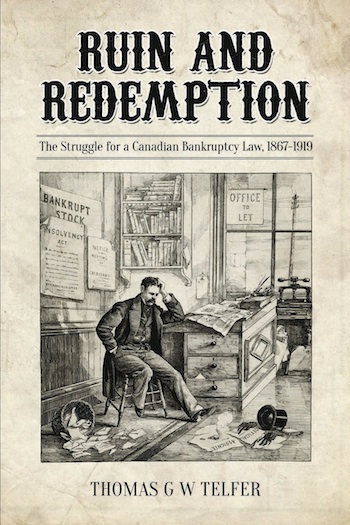New book analyses origins of Canadian bankruptcy laws
November 12, 2014
 Western Law professor Thomas Telfer’s new book Ruin and Redemption: The Struggle for a Canadian Bankruptcy Law, 1867-1919 analyses the ideas, interests and institutions that shaped the evolution of Canadian bankruptcy law.
Western Law professor Thomas Telfer’s new book Ruin and Redemption: The Struggle for a Canadian Bankruptcy Law, 1867-1919 analyses the ideas, interests and institutions that shaped the evolution of Canadian bankruptcy law.
It details the constitutional and legislative history of insolvency law and examines the vigorous public debates over the idea of bankruptcy.
“Modern bankruptcy scholarship has long moved past the question of ‘whether bankruptcy law should exist at all’ and has now focused on ‘how much it should do’. But in late 19th and early 20th century Canada, the central question was whether there should be a bankruptcy law at all,” says Telfer.
 The book, published by the University of Toronto Press for the Osgoode Society for Canadian Legal History, is the first full-length study of the origins of Canadian bankruptcy law.
The book, published by the University of Toronto Press for the Osgoode Society for Canadian Legal History, is the first full-length study of the origins of Canadian bankruptcy law.
“It is rare to find a work on commercial law that animates the law and its history by drawing insight from political debate, social context and commentary, economic analysis and literature, as well as legislation, case law, and parliamentary records,” says Tamara Buckwold of the Faculty of Law, University of Alberta. “Ruin and Redemption is a valuable addition to the legal and historical literature on insolvency law.”
Ruin and Redemption: The Struggle for a Canadian Bankruptcy Law, 1867-1919 was officially launched at an event hosted by the Osgoode Society for Canadian Legal History on November 4. The Osgoode Society was established in 1979 to promote the publication of work on the history of Canadian law, and to create and preserve an oral history archive.






